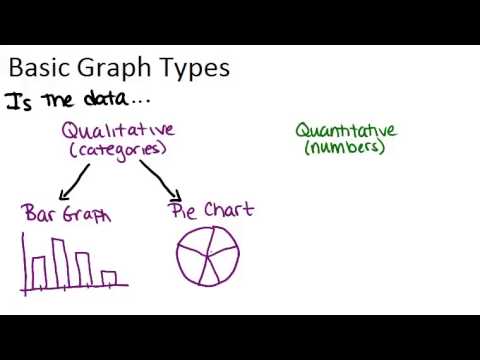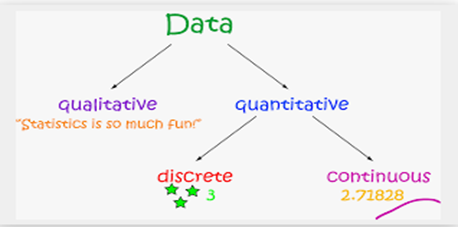Uncovering the Secrets of Discrete Graphs

Discrete graphs are a fascinating and powerful tool in mathematics and computer science, offering a unique way to represent and analyze complex relationships and structures. These graphs, often used to model real-world scenarios, have a wide range of applications across various fields, from social networks and biology to transportation and even quantum computing. This article aims to delve into the world of discrete graphs, uncovering their secrets, applications, and the immense potential they hold.
The Fundamentals of Discrete Graphs

A discrete graph, in its simplest form, is a collection of vertices (or nodes) and edges that connect these vertices. These graphs are an abstraction of real-world relationships, where vertices can represent entities like people, cities, or concepts, and edges represent connections or interactions between them. The beauty of discrete graphs lies in their ability to capture and visualize these relationships in a structured and organized manner.
For instance, imagine a social network like Facebook. Here, each user can be represented as a vertex, and the connections or friendships between users are represented by edges. This simple graph structure can reveal a wealth of information, such as the most connected individuals (hubs), the existence of communities (clusters of tightly connected users), or even the overall structure of the network.
Types of Discrete Graphs
Discrete graphs come in various forms, each with its own unique characteristics and applications. Some common types include:
- Undirected Graphs: In these graphs, edges have no direction. They simply connect two vertices, indicating a relationship without specifying a particular order or direction.
- Directed Graphs (or Digraphs): Here, edges have a direction, indicating a relationship from one vertex to another. These are useful for modeling scenarios where the direction of interaction matters, such as in transportation networks or flow charts.
- Weighted Graphs: These graphs assign a weight or value to each edge, representing the strength or cost of the connection. For instance, in a road network, weights could represent travel distances or times between cities.
- Multigraphs: In these graphs, multiple edges can connect the same pair of vertices, allowing for more complex relationships to be modeled. For example, in a communication network, multiple connections between devices might exist to ensure reliability.
| Graph Type | Description |
|---|---|
| Simple Graph | A graph with no loops (edges connecting a vertex to itself) and no multiple edges between the same pair of vertices. |
| Complete Graph | A graph where every pair of distinct vertices is connected by a unique edge. |
| Bipartite Graph | A graph whose vertices can be divided into two disjoint sets such that every edge connects a vertex from one set to a vertex from the other. |

Applications of Discrete Graphs

The versatility of discrete graphs is evident in their diverse applications across industries and disciplines. Here are some key areas where discrete graphs are making a significant impact:
Social Network Analysis
As mentioned earlier, discrete graphs are instrumental in understanding social networks. By modeling connections between individuals, organizations, or even online communities, researchers and analysts can identify influential individuals, detect communities, and predict future trends. This has significant implications for fields like marketing, where understanding social influence can drive effective strategies.
For example, consider a marketing campaign aiming to promote a new product. By analyzing a social network graph, marketers can identify key influencers who, if reached, could spread awareness rapidly through their connections. This targeted approach can be more effective than traditional mass advertising.
Transportation and Logistics
In transportation, discrete graphs are used to model road, rail, or air networks. By representing cities or stations as vertices and connections as edges, planners can optimize routes, minimize travel times, and improve overall efficiency. In logistics, these graphs help manage supply chains, ensuring goods are delivered efficiently and cost-effectively.
Computer Networks
Computer networks, such as the internet or local area networks, can be modeled using discrete graphs. Here, vertices represent devices like computers or servers, and edges represent connections between these devices. This modeling helps network administrators manage and optimize network performance, ensuring reliable and efficient data transmission.
Biological and Genetic Networks
In biology, discrete graphs are used to model complex biological networks, such as protein-protein interaction networks or gene regulatory networks. These models help researchers understand cellular processes, identify key proteins or genes, and develop targeted therapies for diseases.
Artificial Intelligence and Machine Learning
Discrete graphs play a crucial role in AI and machine learning algorithms. They are used to model relationships in knowledge graphs, which are essential for tasks like entity recognition, relationship extraction, and question answering. Additionally, graph neural networks, a class of deep learning models, can learn from graph-structured data, opening up new avenues for AI applications.
Advanced Topics and Research
The study of discrete graphs extends far beyond their basic definitions and applications. Researchers and mathematicians are continually exploring new concepts and theories, pushing the boundaries of what we know and understand about these structures.
Graph Theory and Combinatorics
Graph theory, a branch of mathematics, studies the properties and characteristics of discrete graphs. It involves exploring fundamental questions like the existence of certain types of graphs, the number of possible graphs with specific properties, and the relationships between different graphs. Combinatorics, another branch of mathematics, also plays a significant role in graph theory, especially when dealing with the counting and enumeration of graphs.
Graph Algorithms
The development and analysis of algorithms that operate on graphs is a critical area of research. These algorithms are used to solve a wide range of problems, from finding the shortest path in a network to identifying connected components or detecting cycles. Efficient graph algorithms are crucial for real-world applications, ensuring that computations can be performed quickly and accurately.
Graph Databases
Graph databases are a relatively new type of NoSQL database that is specifically designed to store and query data with complex relationships. Unlike traditional relational databases that store data in tables with rows and columns, graph databases use nodes and edges to represent and store data. This makes them particularly well-suited for modeling and querying interconnected data, such as social networks, recommendation systems, and knowledge graphs.
One of the key advantages of graph databases is their ability to handle highly connected data efficiently. Traditional databases often struggle with queries that involve complex relationships or large numbers of joins, but graph databases can navigate these connections with ease. This makes them ideal for applications where relationships are crucial, such as fraud detection, recommendation engines, or network analysis.
Future Trends and Potential
The future of discrete graphs looks promising, with potential applications in emerging fields like quantum computing and blockchain technology. In quantum computing, discrete graphs can model complex quantum states and processes, aiding in the development of quantum algorithms and simulations. Blockchain, with its decentralized and distributed nature, can benefit from graph-based approaches to enhance security, scalability, and privacy.
Additionally, the field of graph theory continues to evolve, with new concepts and theorems being discovered and proven. This ongoing research not only deepens our understanding of graphs but also opens up new possibilities for their application in various domains. As we continue to explore and innovate, the secrets of discrete graphs will continue to unveil, offering powerful insights and solutions to complex problems.
How are discrete graphs used in real-world scenarios beyond social networks and transportation?
+Discrete graphs have a wide range of applications beyond social networks and transportation. They are used in biology to model protein interactions and genetic networks, helping researchers understand cellular processes and develop targeted therapies. In computer science, they are essential for understanding and optimizing computer networks. Graphs also play a crucial role in artificial intelligence, especially in machine learning algorithms that learn from graph-structured data.
What are some challenges and limitations associated with using discrete graphs in practice?
+While discrete graphs are powerful tools, they do have certain challenges and limitations. One challenge is the complexity of graph algorithms, which can be computationally expensive for large graphs. Additionally, representing and storing large graphs can be memory-intensive. In real-world scenarios, data can be noisy or incomplete, making it challenging to construct accurate graphs. Despite these challenges, ongoing research and advancements in technology are continuously pushing the boundaries of what can be achieved with discrete graphs.
How can discrete graphs be used to enhance cybersecurity and data privacy?
+Discrete graphs can play a significant role in enhancing cybersecurity and data privacy. In the context of cybersecurity, graphs can model complex networks, helping to identify vulnerabilities and potential attack paths. By analyzing the structure of the graph, security analysts can develop strategies to mitigate risks and improve overall network security. Additionally, graph databases can be used to store and analyze sensitive data in a secure and privacy-preserving manner, as they can control access to specific nodes and edges based on user permissions.



